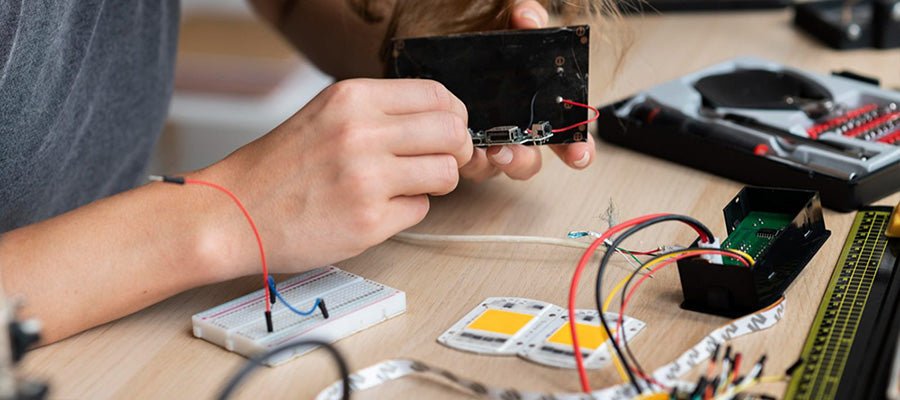Mastering Electronics DIY – Part 2: Beginner-Friendly Projects You Can Build At Home
After covering the essential tools and components in Part 1 of our Mastering Electronics DIY series, it’s time to roll up your sleeves and dive into the fun part — building your own electronics projects! Whether you’re a student, a hobbyist, or just someone curious about how electronics work, starting with beginner-friendly projects is the best way to learn by doing. At Gelco Electronics, we believe that practical experience is the foundation of innovation.
In this blog, we’ll walk you through some simple, safe, and exciting projects that you can try at home to sharpen your DIY skills.
- LED Blinking Circuit: The LED blinking circuit is the classic first project for electronics beginners. Using just a resistor, a capacitor, and a transistor (or a simple timer IC like 555), you can make an LED blink at set intervals. This project teaches you the fundamentals of circuit building, timing, and the role of resistors and capacitors. Plus, watching your first LED blink is an exciting milestone for any DIYer!
- Mini Power Supply (5V Output): Most electronic devices require regulated power. Building a small regulated power supply using a voltage regulator IC (like 7805) helps you understand how to convert and stabilize voltage for your circuits. It’s not only educational but also a highly practical tool you can use for future DIY projects.
- Light-Sensitive Switch (LDR Circuit): Ever wondered how automatic streetlights turn on at dusk? This simple project uses a Light Dependent Resistor (LDR)to detect light intensity and switch an LED or small bulb on/off accordingly. It introduces you to sensors, basic automation concepts, and real-world applications of electronics in daily life.
- Simple Water Level Indicator: This is a great project for homes and farms alike. Using a few probes, transistors, and LEDs, you can build a circuit that indicates the water level in a tank. It not only helps conserve water but also protects pumps from running out of water. This project demonstrates practical problem-solving skills and is highly relevant in both household and industrial settings.
- Portable Phone Charger (Battery-Based): Learn how to make a basic portable phone charger using rechargeable batteries and a voltage regulator. It’s an excellent way to understand how energy storage and regulation work — while also giving you a useful gadget to carry around!
Tips for Beginners
- Start small: Don’t jump into complex circuits right away.
- Work safely: Always double-check connections before powering circuits.
- Document your progress: Keeping a DIY journal helps you learn from mistakes.
- Use breadboards: They make experimenting and modifying circuits much easier.
Building these beginner-friendly projects at home will give you a solid foundation in electronics while boosting your confidence. Each project is designed to be simple yet educational, providing a hands-on understanding of how different components work together.
At Gelco Electronics, we encourage budding innovators to keep experimenting — because today’s small DIY project could be the foundation of tomorrow’s breakthrough technology.















